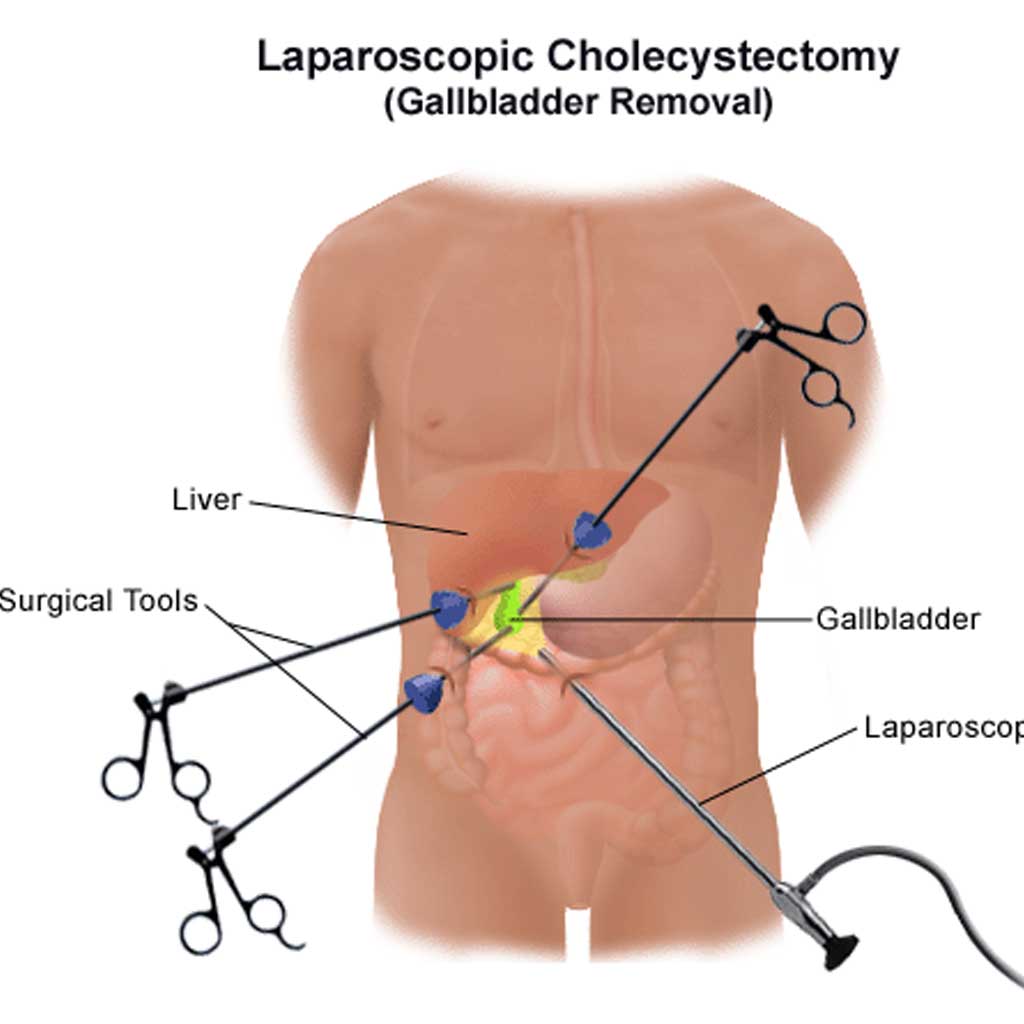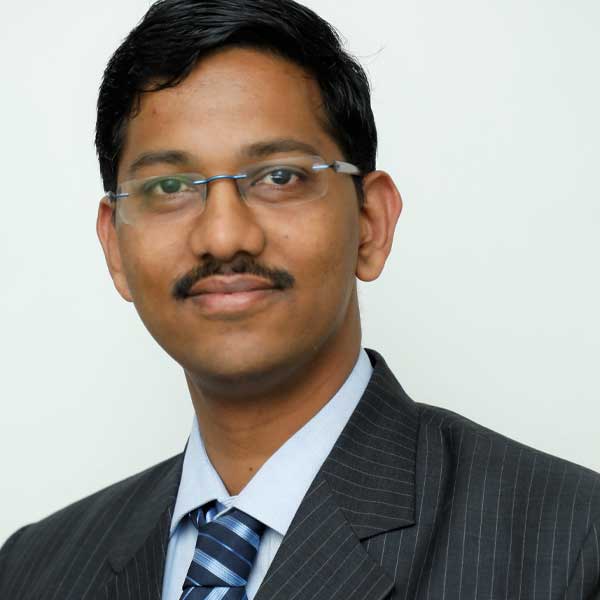Expert Laparoscopic Cholecystectomy surgeon with 12+ Years of experience
Cashless Accepted
High Success Rate
Laparoscopic Cholecystectomy in Pune, India
What is Laparoscopic Cholecystectomy?
Laparoscopic cholecystectomy, commonly referred to as a lap chole, involves the removal of the gallbladder through a laparoscopic approach. The gallbladder normally stores bile produced in the liver until it is needed for digestion. Unfortunately, the gallbladder often forms gallstones.
Who needs a Cholecystectomy?
Patients with gallstones and symptoms as mentioned above should have a Laparoscopic Cholecystectomy, before they develop severe other complications. Occasionally patients without gallstones, who have significant symptoms, will require a Cholecystectomy. Rarely, patients with large gallbladder polyps (growths) will have a Cholecystectomy because of the possibility of developing gallbladder cancer.

We're Providing Best Services To Our Patients
Frequently Asked Questions
Ultrasound method is the most commonly and firmly used test to find gallstones, though more investigations including like MRI or endoscopic ultrasound (EUS),hepatobiliary iminodiacetic acid (HIDA),ERCP may be done. You will also need some blood investigations done to ensure that the liver function is normal. - Gallstones do not go away on their own. Some can be temporarily treated with the help of drugs or by making dietary adjustments, such as reducing fat intake. This treatment has a low, short-term success rate. Symptoms will eventually continue unless the gallbladder is removed. - Laparoscopy removal of the gallbladder is the time honoured and safest treatment of gallbladder disease.
- Laparoscopic cholecystectomy – ‘keyhole’ surgery . The surgeon makes a number of small incisions (cuts) through the skin, allowing access for a range of instruments. The surgeon removes the gallbladder through one of the incisions. About some of cases the gall bladder cannot be safely removed laparoscopically and a traditional open technique is required (laparotomy). This requires a 15 cm incision in your upper abdomen parallel to your right rib cage. This is a bigger procedure and will result in a longer hospital stay. The surgeon makes a number of small incisions into your abdomen, so that slender instruments can reach into the abdominal cavity. A tube blowing a gentle stream of carbon dioxide gas is inserted. This separates the abdominal wall from the underlying organs. The surgeon views the gallbladder on a TV monitor by using a tiny camera attached to the laparoscope. Special x-rays (cholangiograms) during the operation can check for gallstones wedged in the bile ducts. The ducts and artery that service the gallbladder are clipped shut. These clips are permanent. The gallbladder is cut free using either laser or electrocautery. The gallbladder, along with its load of gallstones, is pulled out of the body through one of the abdominal incisions. The instruments and the carbon dioxide gas are removed from the abdominal cavity. The incisions are sutured (closed up) and covered with dressings.
- Open gallbladder surgeryThe general procedure is the same as for laparoscopic surgery, except that the surgeon reaches the gallbladder through a large, single incision in the abdominal wall. Sometimes, an operation that starts out as a laparoscopic cholecystectomy turns into open surgery if the surgeon encounters unexpected difficulties, such as not being able to see the gallbladder properly.
Removal of gall bladder does not cause any side effect or problems in digestions on long term. Gall bladder function as a storage for bile and not involved in production of bile. Hence removal does not cause any side effects on the body.
There’s too much bilirubin in your bile – Cirrhosis, infections, and blood diseases can cause your liver to produce excessive amounts of bilirubin.
Your gallbladder doesn’t empty all the way – Which might cause your bile to become very concentrated.
There’s too much cholesterol in your bile – Bile is required for digestion. It dissolves the cholesterol in most cases. However, if it is unable to do so, the additional cholesterol may create stones.
If you don’t have any symptoms, you don’t require therapy. Some gallstones are tiny enough to pass through your body on their own. Gallbladders are usually removed in persons who have gallstones. It is still possible to digest food without it. One of two treatments will be used by your gallbladder specialist in Pune.
- Laparoscopic cholecystectomy
- This is the most frequent gallstone treatment. A laparoscope is a tiny tube that your gallbladder specialist in Pune inserts into your belly through a small slit. It has a camera, a light, and instruments. Another little cut is used to remove your gallbladder. You’ll normally be able to return home the following day.
- Open cholecystectomy.
To remove your gallbladder, your gallbladder specialist in Pune makes larger cuts in your stomach. After that, you’ll be in the hospital for a few days. Your gallbladder specialist may use ERCP to locate and remove gallstones in your bile ducts before or during surgery. If your gallbladder specialist thinks you should not have surgery because you have another medical problem, they may prescribe medication instead. Ursodiol and chenodiol are used to dissolve cholesterol stones.
They have the potential to induce mild diarrhea. It may take years for the drug to completely dissolve the stones, and they may reappear if you stop taking it. Visit our specialty Gallstone Clinic in Pune for complete Gallbladder Stone Treatment in Pune and Pimpri Chinchwad.


15+ Years Of Experience
Dr Shrikant Kurhade
MBBS, MS Surgery (GMC, Mumbai) Fellowship of National Board-FNB-MAS FMAS, FIAGES, FALS - Robotic Surgery, Consultant laparoscopic, endoscopic and Robotic surgeon
Dr Shrikant Kurhade is considered as one of the best General, Laparoscopic Surgeon. Surgeon in Pune. Dr Shrikant Kurhade has expertise as a GI, Bariatric, Robotic, Endoscopy, colorectal and gastro surgeon and is a reputed Hernia and Piles specialist in PCMC and Pune city. He has expertise in managing large and recurrent hernias with Abdominal Wall Reconstruction techniques. He is expert in piles treatment, with special interest in stapler and Laser surgery and also expert in Digestive System Diseases.
- Practicing since 2011 in Pune
- He has perform various laparoscopic & complicated surgeries of Hernia
- Our centres available at Alandi, Charholi & Pimple Saudagar
Read Our Patients Reviews
Book An Online Appointment
Feel Free To Contact Us To Get Our Medical Services
Call Us(+91 8550996969)Read Our Latest News & Blog
 15
15Mar
Best Option To Treat Hernia
Do you suffer from the following symptoms? A bulge in the area on either side of your pubic bone...
 27
27Feb
What is Incisional Hernia ?
An incisional hernia is a type of hernia can occur near or along with surgical scars in the...
 3
3May
Complications of Hernia
Hernia is defect on abdominal wall through which a sac containing pops out causing bulge...
